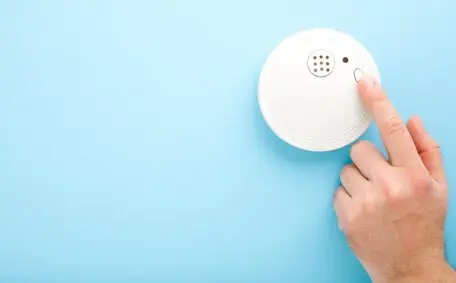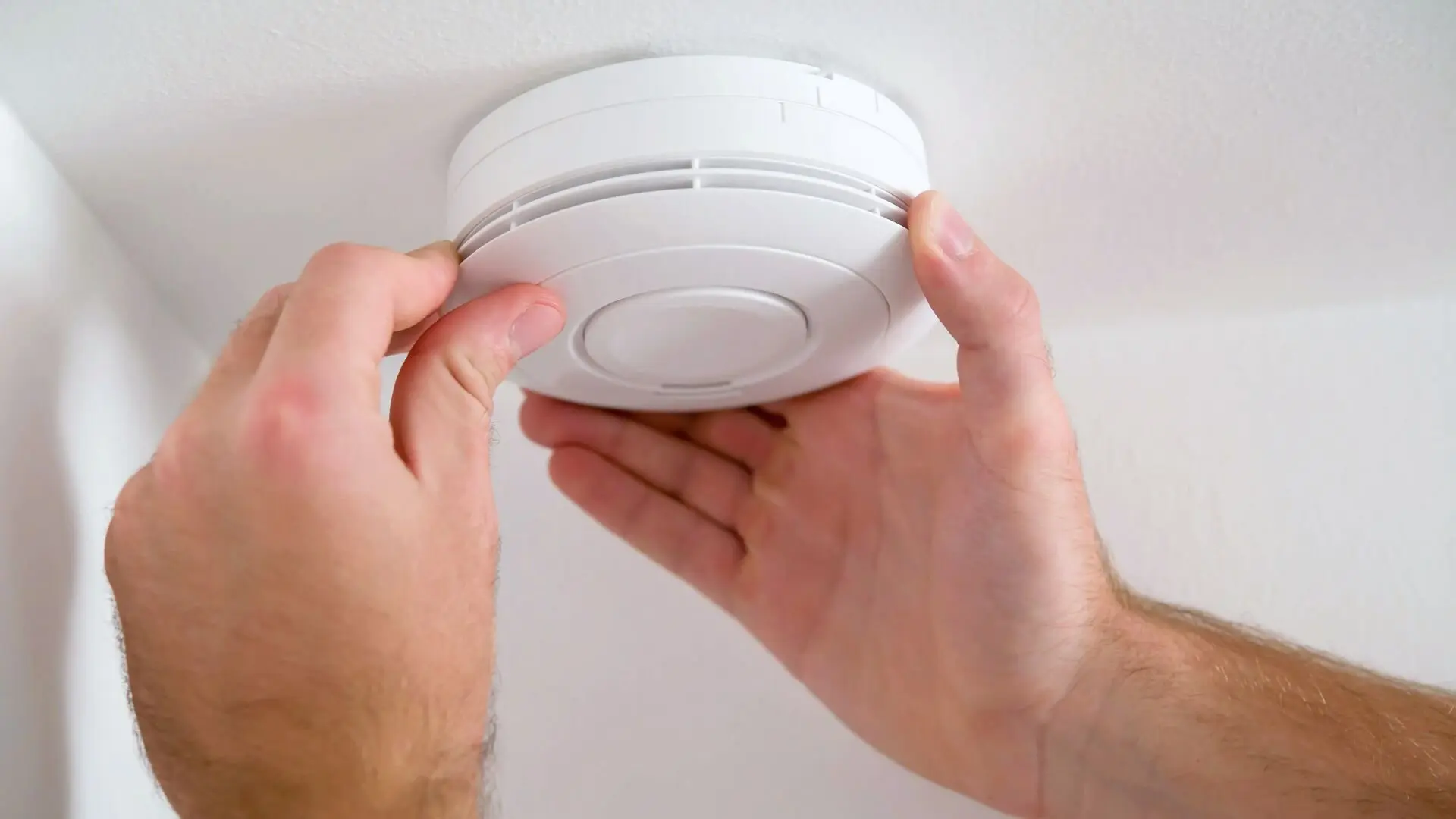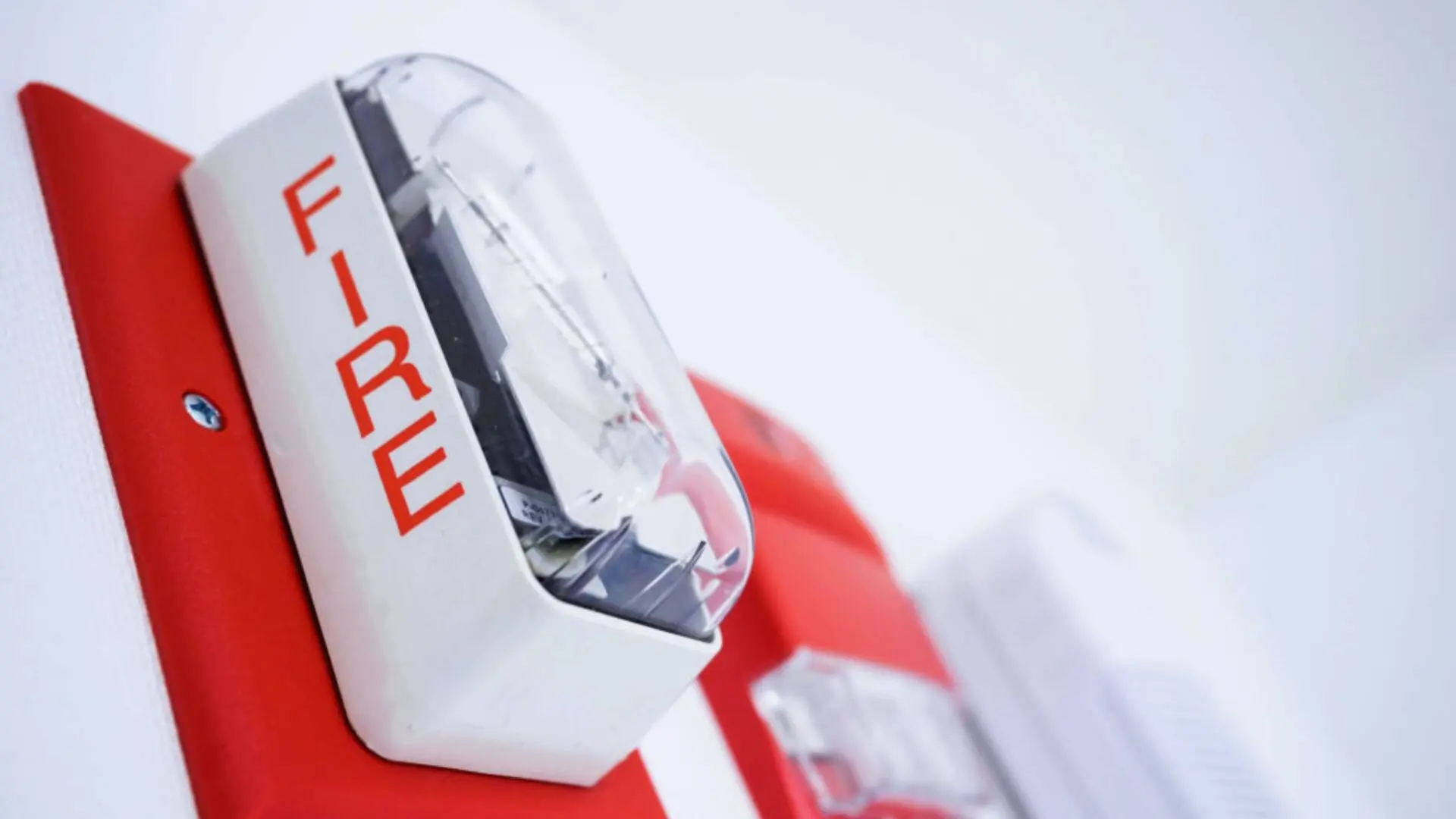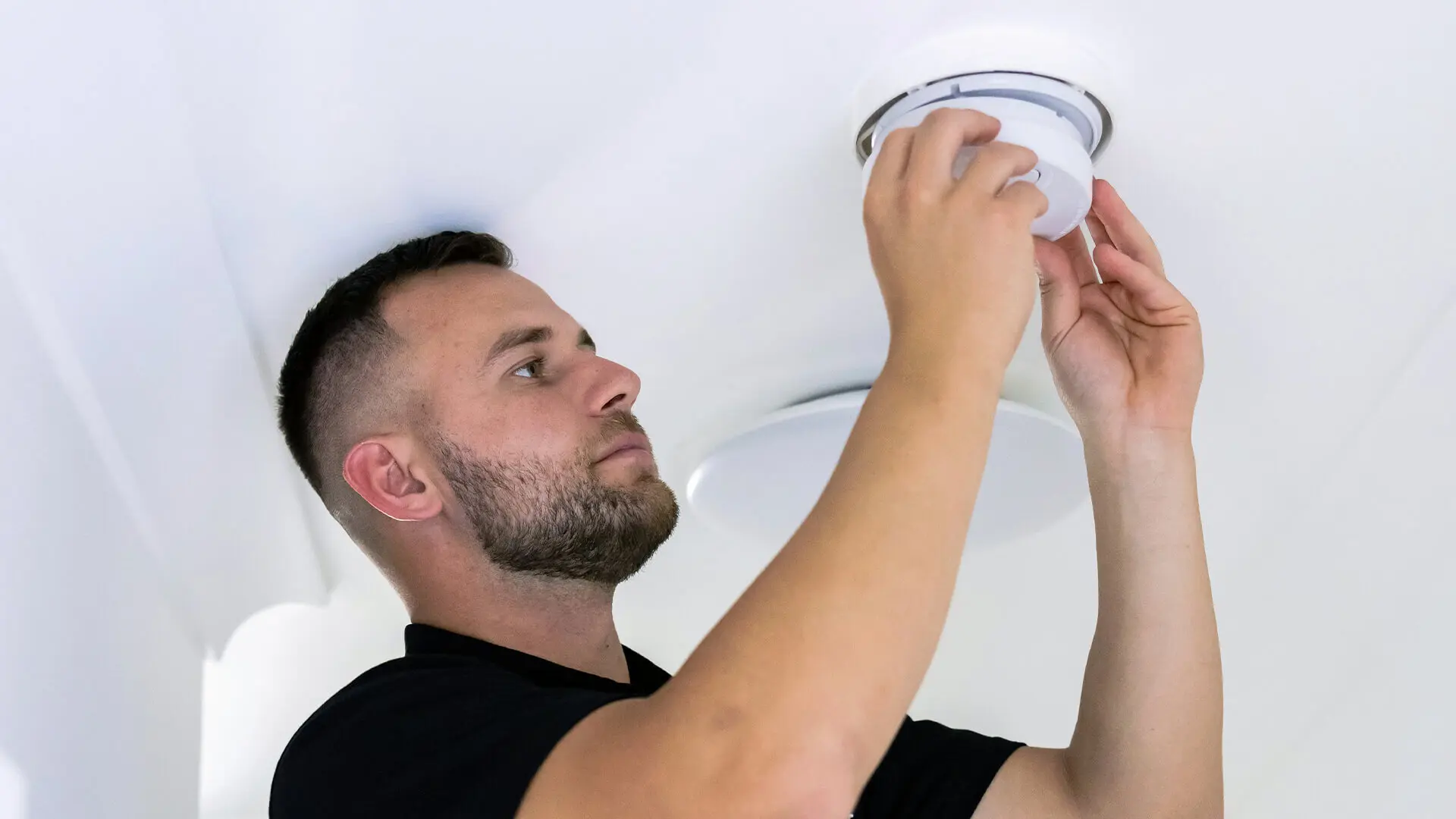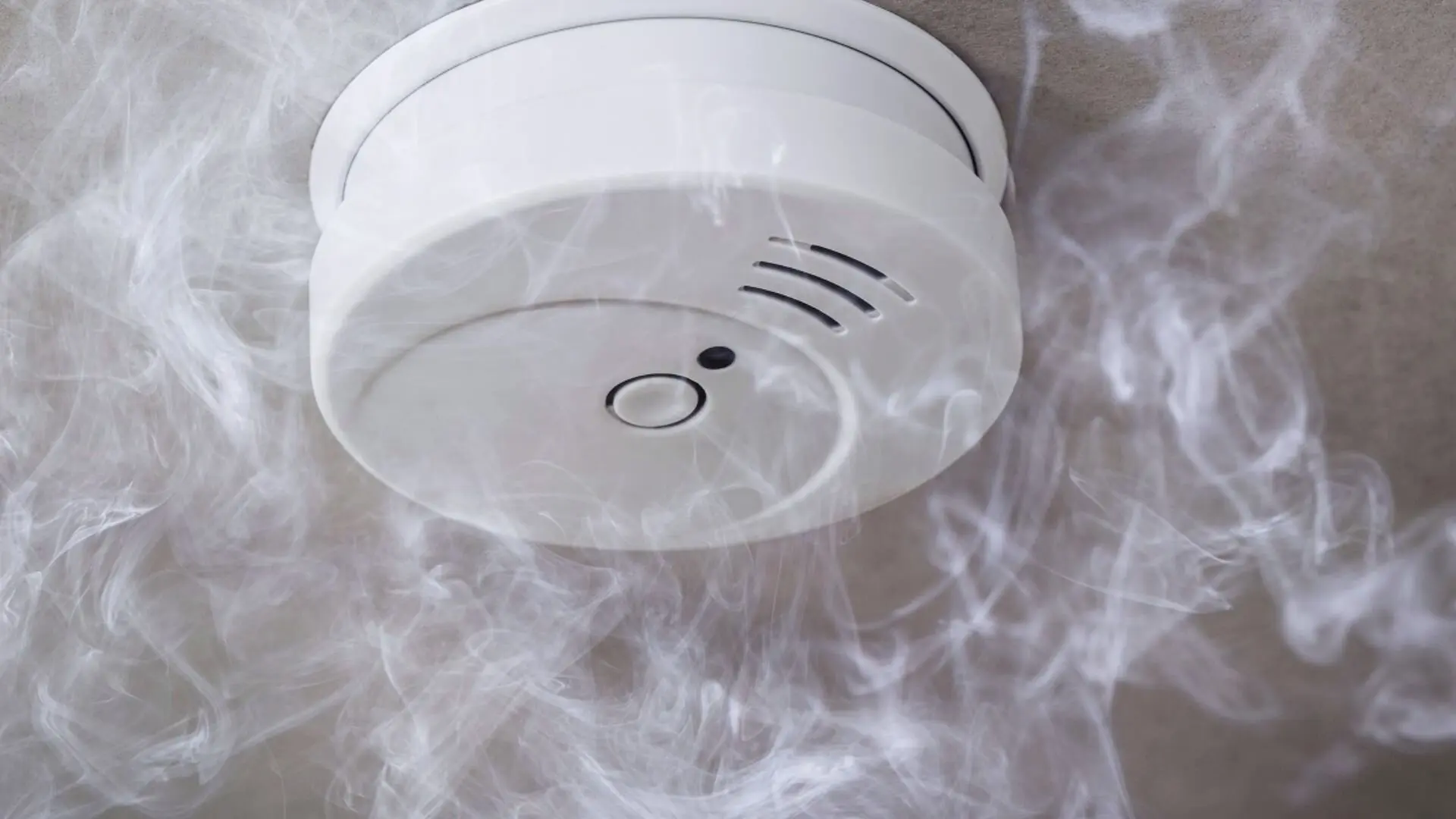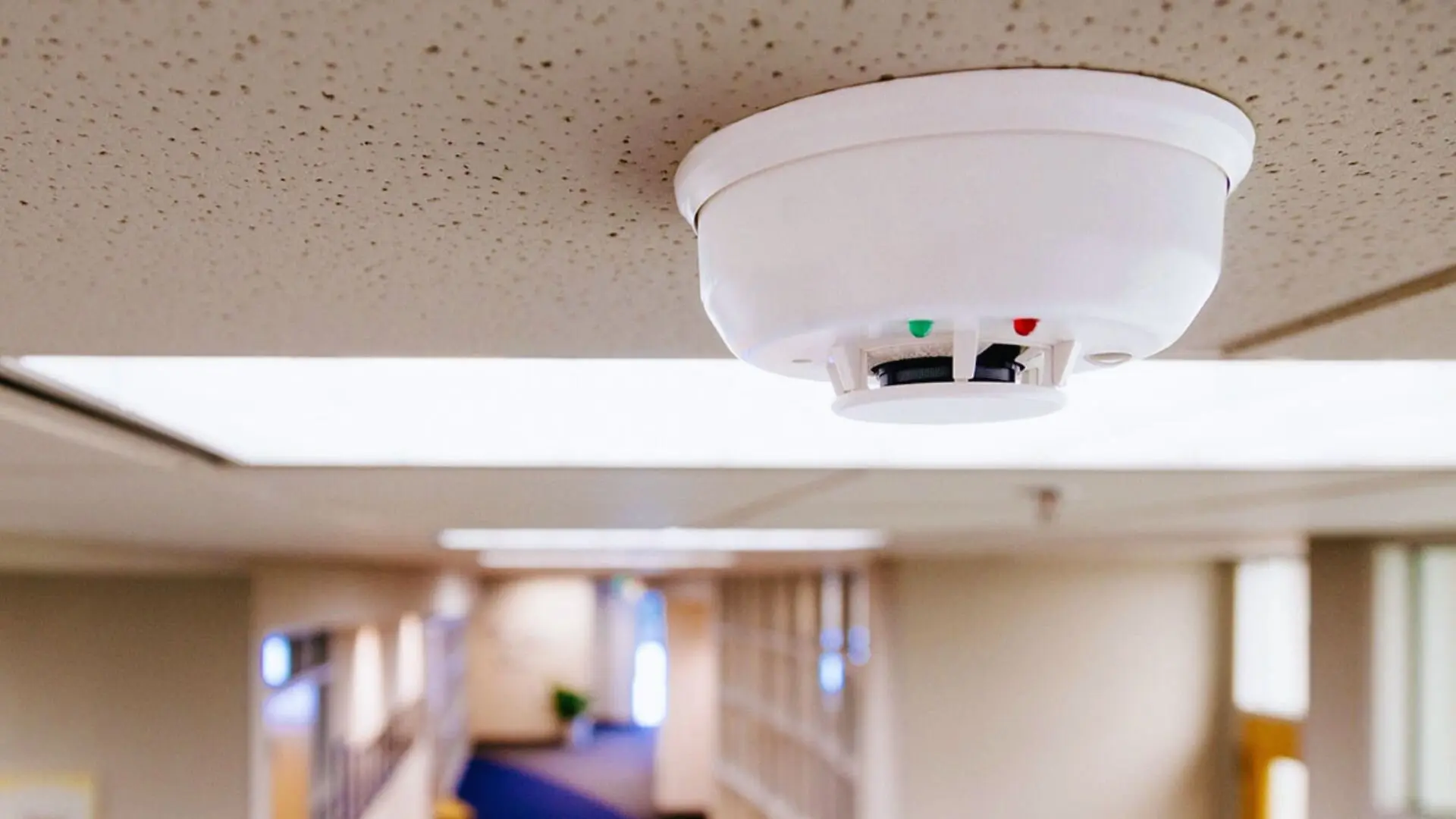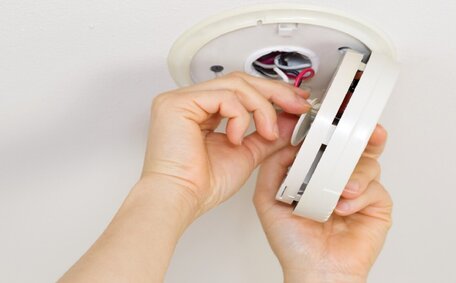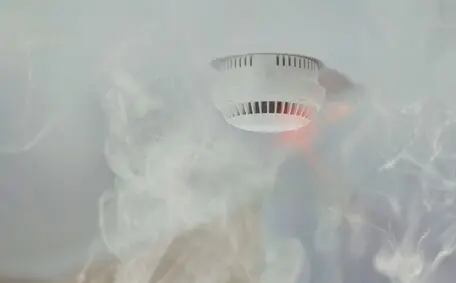Smoke alarms are lifesavers, providing early warning signs during a fire. These compact devices detect smoke particles in the air and sound a loud alarm, offering crucial time for everyone to evacuate safely and swiftly.
Keeping your smoke alarms in top shape is crucial for their effectiveness. In this guide, we’ll delve into why smoke alarms are vital and share key tips on maintaining them. This way, they’ll be ready to protect you from the dire impacts of fires.
Why Smoke Alarms Matter
Explore why smoke alarms matter and why every household should have them.
Early Detection Of Fire
Smoke alarms are designed to detect the presence of smoke, providing early warning of a potential fire. Early detection is critical for timely evacuation, allowing occupants to escape safely before the situation worsens. By sounding an alarm at the earliest stages of a fire, smoke alarms can help save lives.
![2023 06 Testing Smoke Alarm In Home Testing Smoke Alarm Home]()
Protection During Sleep
Fires can occur anytime, including at night, when everyone is asleep. Smoke alarms act as guardians while you rest, monitoring the air for signs of smoke. Their sensitive sensors can wake you at the first hint of danger, allowing for a swift and safe evacuation.
Effective Response To Smouldering Fires
Not all fires start with a burst of flames; some begin as smouldering fires that produce thick smoke before escalating. Smoke alarms are specifically designed to detect the early signs of smouldering fires, which can go unnoticed without a reliable detection system. By alerting occupants to smouldering fires, smoke alarms provide crucial time for action and prevent the spread of fire.
Property Protection
Smoke alarms help protect property, besides safeguarding lives. Detecting fires in their early stages enables prompt intervention and reduces the risk of extensive damage to homes and belongings. The cost of installing smoke alarms is minimal compared to the potential losses in a fire incident.
Compliance with Building Codes And Insurance Requirements
Many building codes and insurance policies mandate the installation of smoke alarms in residential properties. By having functional smoke alarms, homeowners ensure compliance with these requirements, which can lead to reduced insurance premiums and peace of mind knowing that their home meets safety standards.
Peace of Mind
Knowing that your home is equipped with smoke alarms provides peace of mind for you and your family. It’s a proactive step towards creating a safe environment and preparing for emergencies. With smoke alarms in place, you can sleep better at night, knowing you have a reliable early warning system.
Smoke Alarm & Fire Safety Statistics
Statistics and real-life stories highlight the life-saving power of smoke alarms. According to the NFPA, three out of five home fire deaths happen in homes without working smoke alarms. This underscores their critical role in saving lives, cutting the risk of dying in a fire by 50%.
![2023 06 Fire Safety Alarm On Wall Fire Safety Alarm Wall]()
The Australian Bureau of Statistics also highlights the importance of smoke alarms. Between 2014 and 2018, 58% of fire-related residential deaths occurred in homes without them or with faulty alarms. This shows why having well-installed and well-maintained alarms is essential for home safety.
Research has also demonstrated that most fire-related deaths occur at night when individuals are asleep and less aware of their surroundings. This reinforces the crucial role that smoke alarms play in providing early warning and alerting occupants to potential fire hazards.
If you’re after thorough fire coverage, consider alarms with both ionisation and photoelectric sensors. These dual-sensor alarms catch various fire types, offering enhanced safety for your home.
Types of Smoke Alarms
Variety exists in smoke alarms, each with unique technology and benefits. Knowing the differences helps you pick the best fit for your home. Here’s a closer look at the two main types:
![Smoke Detector Services Hero Smoke Detector Services Hero]()
1. Ionisation Smoke Alarms
Ionisation smoke alarms are designed to detect the invisible particles produced by fast-flaming fires. They contain a small amount of radioactive material that ionises the air inside the alarm. When smoke enters the alarm chamber, it disrupts the electrical current, triggering the alarm. Ionisation smoke alarms are highly effective in detecting fires characterised by rapidly spreading flames.
Benefits of Ionisation Smoke Alarms:
2. Photoelectric Smoke Alarms
Photoelectric smoke alarms use a beam of light to detect smoke particles. Inside the alarm, a light source emits a beam that, in normal conditions, remains unbroken. When smoke enters the alarm chamber, it scatters the light, causing it to hit a sensor and trigger the alarm. Photoelectric smoke alarms are particularly effective in detecting slow-burning, smouldering fires that produce more smoke before erupting into flames.
Benefits of Photoelectric Smoke Alarms:
- Provide early detection of smouldering fires, which may occur during sleep or in areas with combustible materials.
- Less prone to false alarms caused by cooking or steam.
- Recommended for bedrooms, hallways, and living areas where smouldering fires are more common.
Installation Guidelines
Installing smoke alarms in your Sydney home is essential to ensure their effectiveness in detecting and alerting you to smoke or fire. Follow these step-by-step guidelines to install smoke alarms in different areas of your home:
![2023 06 Smoke Bellowing Near Fire Alarm Smoke Bellowing Fire Alarm]()
1. Bedrooms
Install a smoke alarm in every bedroom. Place the alarm on the ceiling or high on the wall, within 30 centimetres of the ceiling. Avoid installing the alarm near air vents, windows, or doors, as it may affect performance.
2. Hallways
Install smoke alarms in each hallway or corridor outside sleeping areas. In bedrooms, position the alarms on the ceiling or high on the wall, within 30 centimetres of the ceiling. Consider installing additional smoke alarms at both ends of the hallway, which is long.
3. Kitchens
It is essential to install a smoke alarm in or near the kitchen. However, place the alarm away from cooking appliances to minimise false alarms. Consider using a photoelectric smoke alarm in the kitchen to reduce false alarms caused by cooking-related smoke and steam.
4. Living Areas
Install smoke alarms in living rooms, family rooms, and other common areas. For example, in previous cases, the alarms were positioned on the ceiling or high on the wall within 30 centimetres of the ceiling.
5. Additional Recommendations
- Install smoke alarms in the basement and every level of your home, including the attic.
- Interconnect all smoke alarms so that when one alarm detects smoke, all alarms in the system will sound.
- Follow the manufacturer’s instructions for proper installation and maintenance.
- Regularly test your smoke alarms to ensure they are functioning correctly.
- Replace the batteries in your smoke alarms at least once a year or as the manufacturer recommends.
- Replace smoke alarms every ten years or sooner if they malfunction.
Testing and Maintenance Tips
Regular testing and maintenance of smoke alarms are crucial to ensure their reliability and effectiveness in detecting smoke or fire. Follow these essential tips to keep your smoke alarms in optimal working condition:
![2023 06 Light Indicators On Smoke Alarm Light Indicators Smoke Alarm]()
Test Your Smoke Alarms
It is essential to test your smoke alarms at least once a month. Press the test button on each alarm and listen for the loud, piercing sound. If the alarm doesn’t sound, check the batteries and replace them if necessary.
Clean Your Smoke Alarms
Regularly clean your smoke alarms to remove dust, debris, and cobwebs that may interfere with their functionality. Use a vacuum cleaner attachment or a soft brush to clean the alarm’s openings gently. Remember not to remove the cover or disassemble the alarm unless stated in the manufacturer’s instructions.
Replace Batteries
Replace the batteries in your smoke alarms at least once a year or as the manufacturer recommends. Consider using long-lasting lithium batteries for extended battery life. Avoid waiting for the low-battery chirping sound; proactively replace the batteries to ensure continuous protection.
Conduct Monthly Alarm Checks
Perform a visual inspection of your smoke alarms every month. Ensure that the alarms are securely attached to the ceiling or wall. Check for any signs of damage, such as cracks or discolouration. If you notice any issues, promptly replace the faulty alarm.
Develop an Evacuation Plan
Create a fire evacuation plan with your family, including designated meeting points and escape routes. Practice the evacuation plan regularly, especially if you have young children. Ensure that everyone in your household knows the sound of the smoke alarm and understands what to do when it goes off.
Stay Alert, Stay Safe!
By following these testing and maintenance tips, you can ensure that your smoke alarms are always in proper working order and provide you with the earliest possible warning in case of a fire.
Remember, smoke alarms are your first line of defence and can significantly increase your chances of escaping a fire safely. Regular maintenance and testing are essential to protecting your home and loved ones.
For expert advice on smoke alarms or to schedule a professional installation, contact Bright Force Electrical in Sydney. We service many areas, including Pennant Hills, Riverwood and Yagoona. We also offer 24-hour emergency assistance for all our electrical services.
Before you leave, are you interested in more great tips to keep your home safe? Check out our article on the advantages and disadvantages of security cameras in your home.
That’s all for this guide. We will see you next time!
